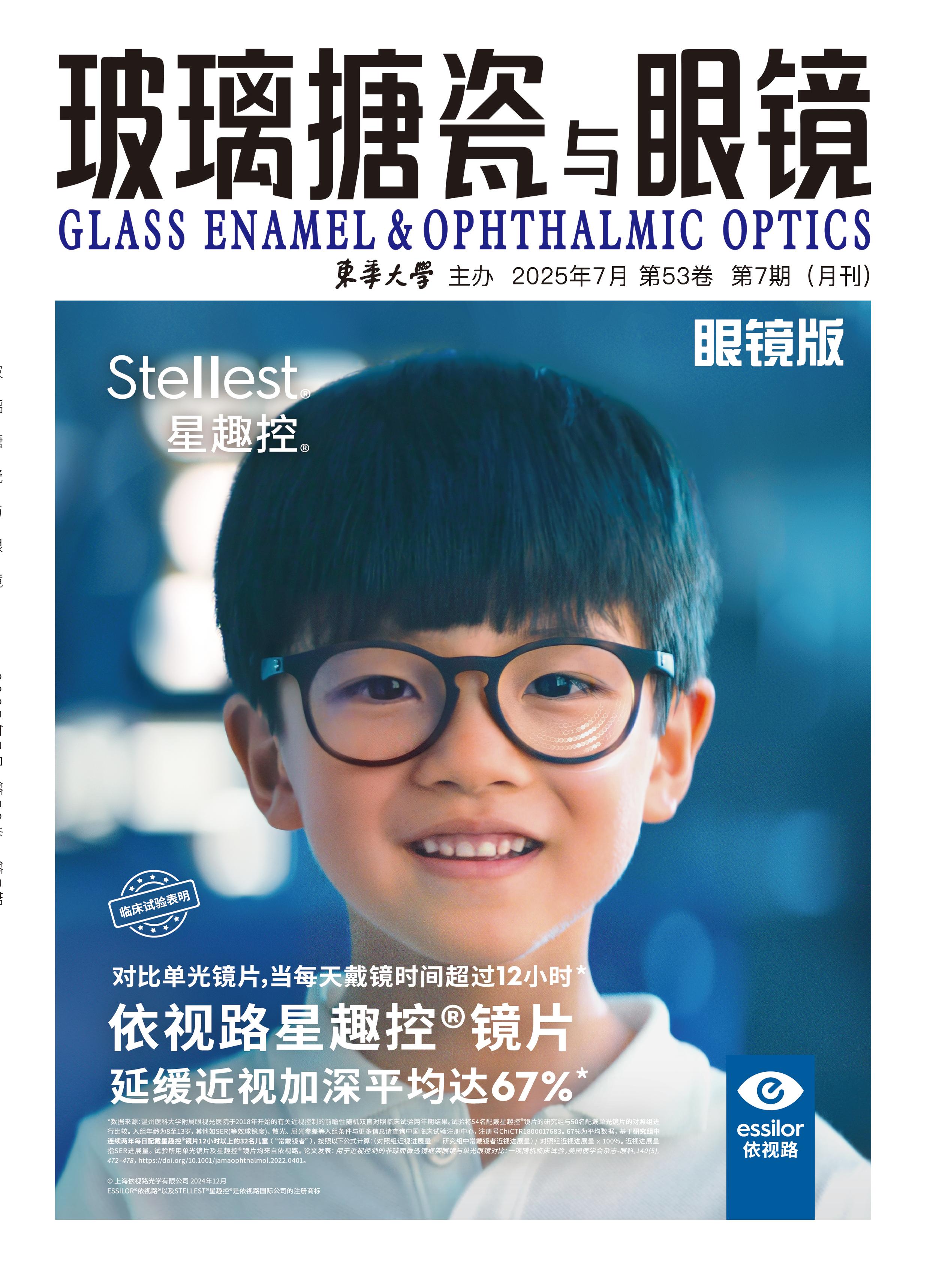
To observe the wearing experience of a new free\|form designed toroidal progressive addition lenses in the presbyopic population, thirty-three presbyopic subjects wearing the new progressive addition lenses were selected using sequential sampling method, and the subjective visual quality and wearing experience were observed on the basis of the Wearing Experience Scale after the first wear, one week of wear, and one month of wear. The results showed that the new design of progressive addition lenses allowed presbyopes to obtain a good visual clarity at different distances, visual field width at different distances, and freedom of switching the use of distance and near distances. In addition, the new design of progressive addition lenses was easy and quick to adapt to, with similar adaptability observed in the myopic, hyperopic, and emmetropic groups. There was no significant wearing experience difference at different time nodes of use.
Product standard and supervision and random inspection are the basis for determining product quality.while they share similarities, they also have distinct differences.Correctly applying them is crucial not only for the accuracy of test results but also for the validity of the final judgment. Taking spectacle frame products as an example, it was important to emphasize that the supervision and sampling implementation rules was not a simplified version of the product standard. Product standards and supervision and sampling implementation rules should not be opposed to each other. Instead, it was necessary to clarify the respective roles and efficacy of product standard requirements and supervision and sampling implementation rules, ensuring their accurate application. Particular attention should be paid to avoiding any deviation in the sampling judgment process.
The improvement of fitting experience satisfaction required consideration of multiple factors, including the frame and lenses, equipment, technical services, fitting environment, psychological communication and other aspects of the differences in strategy. By implementing combined with the progressive multifocal lens fitting process stage, real-life experience, technical standardization of these three types of specific solutions, the choice of progressive multifocal lenses wearers and the rate of success of fitting could be effectively improved. Additionally, integrating these efforts with comprehensive presbyopia management would further enhance the satisfaction of progressive multifocal lens fitting.
Myopia is one of the most common eye disease, which not only significantly affects the life of young people, but may also lead to serious consequences such as vision loss, macular degeneration and even blindness. At present, the etiology of myopia in adolescents was not yet clear, but genetics and environment were recognized as the two main causative factors. Behavioral factors, such as excessive use of electronic screens and incorrect reading habits, had also been shown to be closely associated with the rising incidence of myopia. This work systematically compiled the pathogenesis of adolescent myopia and the progress of therapeutics research, aiming to provide scientific basis and theoretical support for reducing the incidence of myopia in adolescents and optimizing clinical treatment protocols.
In the non-surgical treatment of ophthalmic diseases, astigmatism correction is one of the key factors in improving the quality of vision. Contact lenses, including soft contact lenses, rigid contact lenses, and hybrid contact lenses, play an important role in astigmatism correction. The development and application of these medical consumables provide a variety of options for astigmatism correction in the surgical treatment of ophthalmic diseases, and significantly improve the postoperative visual quality of patients. However, they have their own unique design requirements and application scenarios, which can not fully meet the clinical needs, and future research needs to further optimize these technologies to improve the correction effect and reduce the risk of complications.
Current research status both domestically and internationally indicated that domestic research on myopia prevention and control had undergone three stages: scattered research, steady growth and rapid growth. Research showed that the low prevalence of myopia among German adolescents was primarily attributed to the Eye Protection Association and a favorable visual environment. On the basis of analysis and research, a visual health promotion system for adolescents and children in Yongzhou region was constructed under the home-school-community collaboration model, employing a "city-district-community-school" four-level linkage mode and "medical-educational-sports" multi-department collaborative working mechanism. Taking measures to construct education propaganda system, behavior standard system and monitoring intervention system could help children and adolescents' visual health.
The report of the 20th National Congress of the Communist Party of China officially proposed the innovative expression of “integration of science and education”, which pointed out a new direction for the modernization of chinese vocational education and made it clear that the integration of industry and education should become an important support for the high-quality development of the modern industrial system. The school and the technology company had closely cooperated, comprehensively and thoroughly implemented the educational philosophy of integrating industry, education and research, and built a multi-dimensional platform for the integration of science, education and industry featuring “talent training, scientific research innovation, social service and integration of production, education and research”. Through school-enterprise cooperation , initiatives such as reforming the talent training model, conducting horizontal research projects, and jointly organizing participation in innovation and entrepreneurship competitions could effectively enhance the quality of talent development in the industry, support the growth of enterprises, and thereby better serve the local economy.










